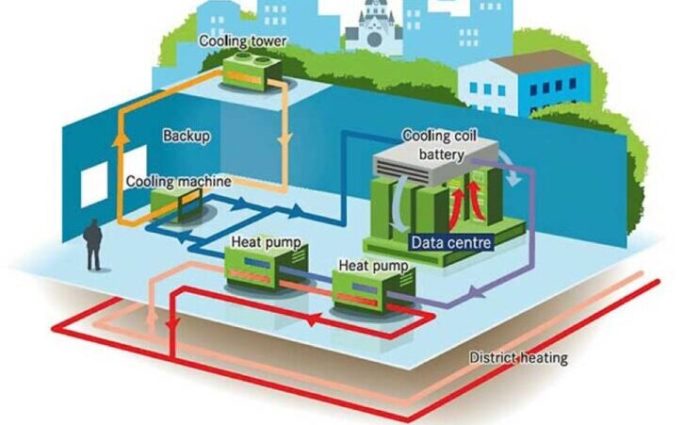Jul 16 2021
Taking the Heat
 About 70% of all energy produced in the world is wasted as heat. That’s a pretty startling figure. This heat largely just dissipates into the environment, without doing anything useful. If we could reduce that waste to 40% then we could reduce our energy production needs by half. Imagine removing the least efficient and dirtiest half of our energy production from the system. Of course, this is easier said than done. Waste heat comes with the territory, and is lost all long the system.
About 70% of all energy produced in the world is wasted as heat. That’s a pretty startling figure. This heat largely just dissipates into the environment, without doing anything useful. If we could reduce that waste to 40% then we could reduce our energy production needs by half. Imagine removing the least efficient and dirtiest half of our energy production from the system. Of course, this is easier said than done. Waste heat comes with the territory, and is lost all long the system.
There are lots of ways to reduce waste heat. Many are low tech, in that we can do them now with existing technology. Others are high tech, and would likely require some research and development. Let’s talk about some of the low tech methods first.
One method is to reduce waste heat in the first place, and part of this is simply proper insulation. Adequately insulating building is obvious, and the focus of a lot of attention recently, but this could also mean insulating engines that produce energy so that more of that energy goes to making electricity and less is dissipated to the environment as waste. Another method has even greater potential to recapture waste heat, by diverting it to a useful purpose – heating water or heating homes and other buildings. In regions experiencing cold weather electricity is often produced distantly, producing a lot of waste heat that is just shunted into the environment. That electricity is then sent to buildings that use it to produce more heat. But what if waste heat from electricity production could be used to directly heat buildings? That could be a massive savings.
This solution, however, requires an infrastructure redesign to some extent. Right now energy production is largely centralized far away from where it is mostly used, in order to keep pollution away from where people live and work and for safety reasons. Building cleaner, safer, smaller power plants nearer to industrial parks, for example, could allow them to make use of much of what would otherwise be wasted. Even just outside of urban areas could be feasible, with water pipelines serving as the conduit for the recaptured heat. Today in the US about 10% of power production produces both electricity and usable heat. The Department of Energy hopes to increase this to 20% by 2030, but perhaps we need a much more ambitious goal.
There are also other sources of significant waste heat, such as data centers. A lot of electricity is used to cool these data centers, again creating more waste heat in order to deal with the first waste heat. Data center cooling systems can be designed to capture that heat and put it to good use. Using a water-based cooling system, the resulting heated water can then be used to heat homes or swimming pools. Data centers, of course, can be placed anywhere, including in urban settings.
The “high tech” way to recapture waste heat is to use thermoelectric technology to turn that waste heat directly into electricity. We already have thermoelectric generators, but they are limited in that their efficiency is low – they only create a tiny amount of electricity from the heat. This is useful for small remote devices, prolonging battery life or powering very low powered devices, like sensors. This is where research and development are critical. If we could increase the efficiency of thermoelectric devices to an extent similar to recent advances in solar and battery technology, then eventually we may be able to use them for significant energy recapture.
The basic technology is advancing steadily. In 2018 this MIT research found a way to triple the efficiency of existing thermoelectric devices. A recent study reports on researchers who have made the least heat conducting solid material to date. This kind of material is essential for making thermoelectric devices, and could also be used for basic insulation purposes. But further, it advances our basic science knowledge of how materials conduct heat.
Large thermoelectric generators have been available for years. Here is one from 2014 boasting an efficiency of 2.5%. By 2019 such generators were about 5% efficient. Here is a home generator that claims 12% efficiency. These ratings depend upon the temperature, so this is probably in their optimum range. The home device is meant to be used along with a wood-burning fireplace, operating at about 300 degrees (good for those trying to live off the grid). The technology is about where solar panel technology was 20 years ago, and hopefully will experience a similar increase in efficiency and decrease in cost. The generators themselves are solid state, without any moving parts.
Even if we can get efficiency up to about 20% (where commercial solar panels are today), that could make a huge difference in the efficiency of our energy infrastructure, especially if we combine it with the lower tech heat recapture strategies.
Waste heat should not be taken for granted. That 70% figure means it is a huge opportunity to increase the efficiency of our energy infrastructure.






